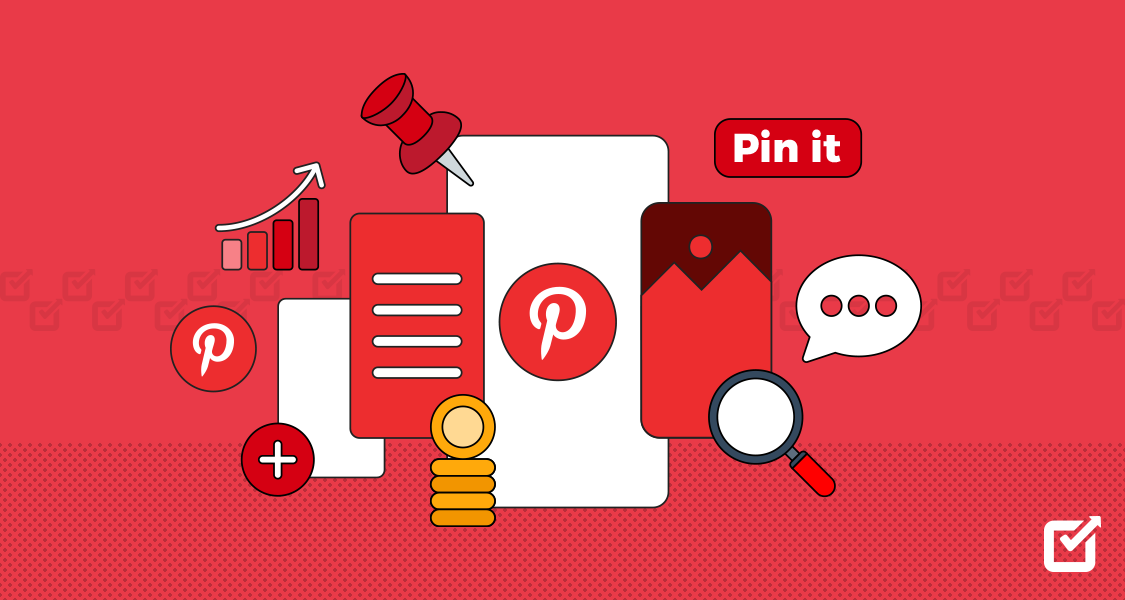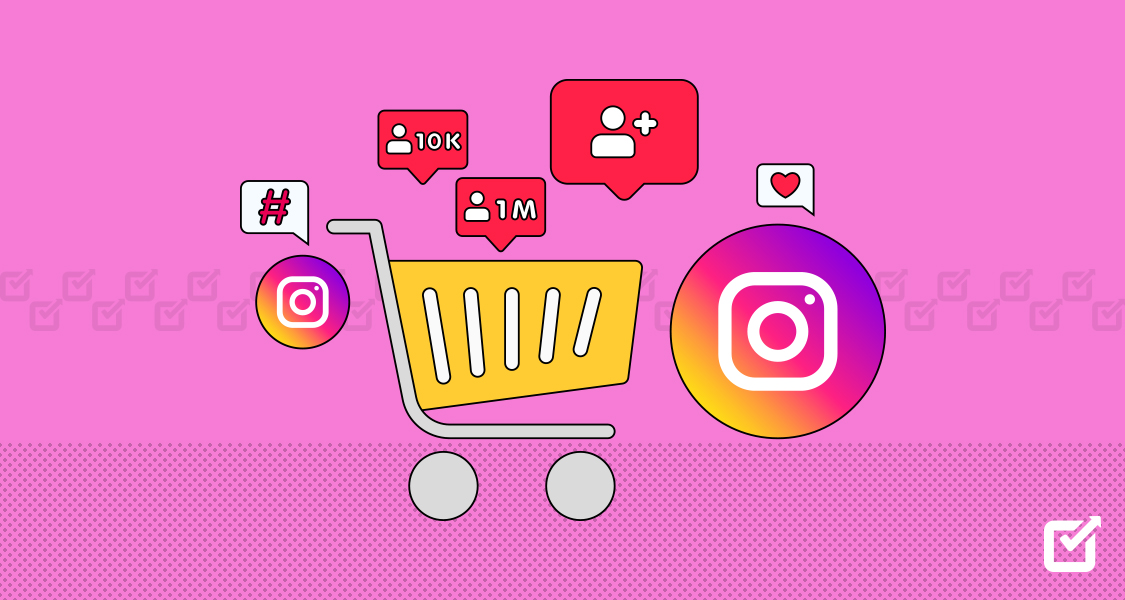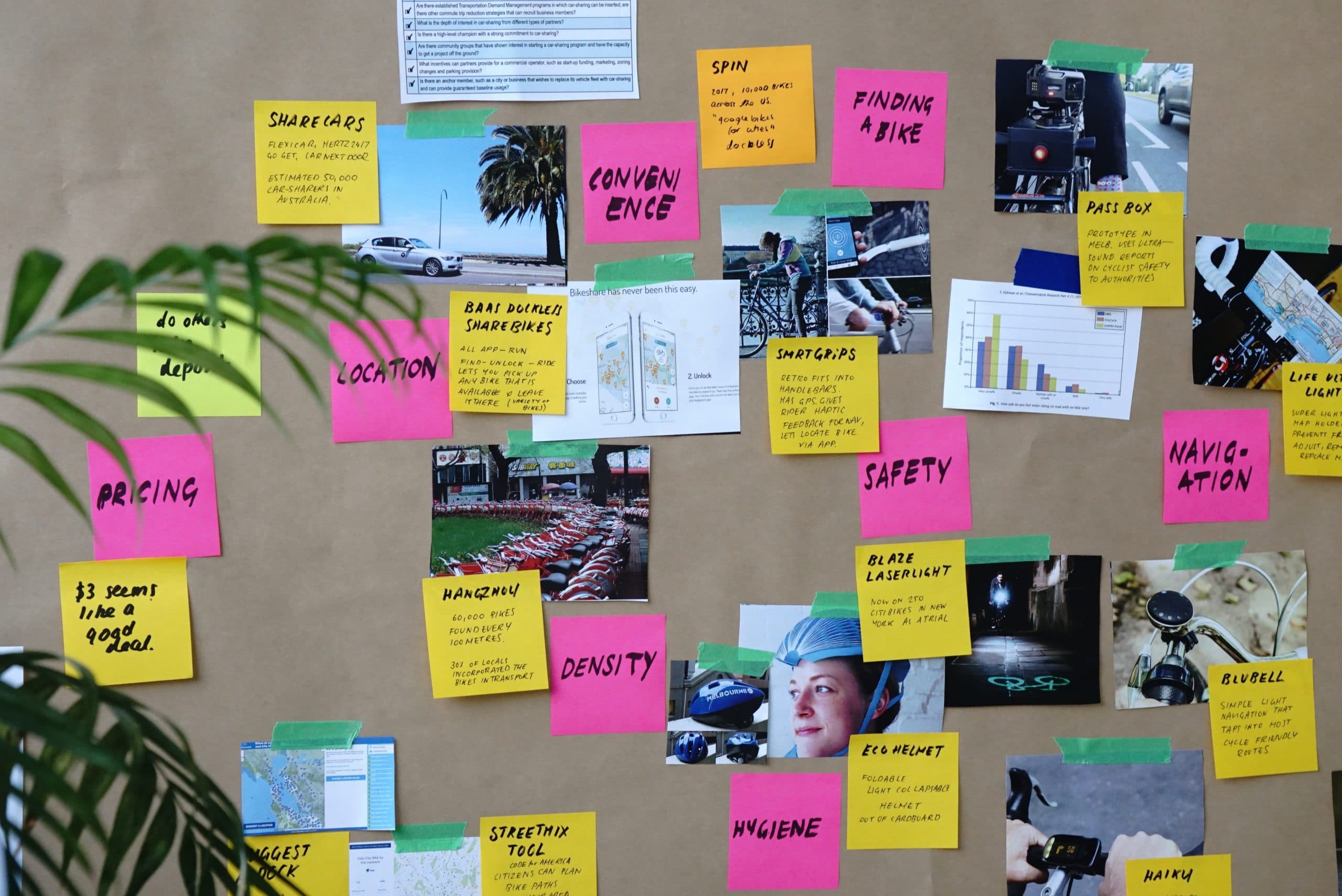Let’s kick things off with a staggering fact: Pinterest isn’t just a platform; it’s a bustling community of 465 million monthly active users worldwide. And get this— a whopping 88% of users actually make purchases based on what they discover on Pinterest!
Those numbers speak volumes about the sheer potential and impact Pinterest holds for anyone in the blogging sphere. For a blogger, that’s like discovering a gold mine of potential readers and engaged audiences ready to dive into what you offer.
Whether you’re a seasoned wordsmith or just dipping your toes into the blogging waters, it’s crucial that you understand how to use Pinterest for blogging and how to leverage a Pinterest scheduler.
I’m here to unlock the secrets, spill the strategies, and share the tricks of the trade that will help you stand out in a sea of content. Together, we’ll navigate this ever-evolving landscape and discover how to use Pinterest as a tool and a turbocharger for your blogging success in 2024.
How to Use Pinterest for Blogging: A Step-By-Step Guide
Mastering Pinterest for blogging involves a strategic approach that goes beyond pinning pretty pictures. Here’s a step-by-step guide to unlock the potential of Pinterest and transform your blog into a revenue-generating powerhouse:
Optimize your Profile
Optimizing your Pinterest profile is like creating a storefront for your blog in the bustling streets of the internet. It’s your chance to make a dazzling first impression that entices visitors to explore what you have to offer. Think of it as your blog’s digital business card, speaking volumes about your niche, style, and what sets you apart.
Crafting a compelling Pinterest profile involves infusing it with the essence of your blog’s personality. Your profile should resonate with your blog’s niche, mirroring its theme, tone, and visual style. Whether you’re all about DIY crafts, mouthwatering recipes, travel adventures, or in-depth tech insights, your Pinterest profile should exude that specialty.
But here’s the secret sauce: keywords. These little powerhouses are the keys to unlocking discoverability. Sprinkle relevant keywords strategically throughout your profile bio and board descriptions. These keywords should be aligned with your blog’s focus and what your target audience might be searching for on Pinterest.
When you optimize your profile with the right keywords, you’re essentially putting up signposts that guide Pinterest users straight to your content. It’s like having a map that leads your audience directly to the doorsteps of your blog, inviting them to explore, engage, and become a part of your vibrant online community.
Optimizing your profile should be the first step to your answer to “how to use Pinterest for blogging?”
Create Stellar Pins
Pins are the currency of attention in this visual playground, and making yours stand out amidst the crowd is key to driving traffic to your blog and ultimately thriving in Pinterest blogging.
Think of your pin as a visual story—each element, from the image to the text, works together to tell the viewer what your blog post is about and why they should care. It’s an invitation, a glimpse into the world of your blog, enticing users to click through and explore the treasure trove of content you’ve prepared for them.
You can start by choosing high-quality images that resonate with your blog content and captivate the viewer’s attention. These images should be visually appealing, clear, and relevant to the message you want to convey. Whether it’s a stunning landscape, a mouthwatering dish, or a DIY project in action, the image should immediately draw people in.
Next, consider the text overlay. This is where your pin gets its voice. Use engaging fonts that complement your brand and make your text pop. Whether it’s a catchy title, a compelling quote, or a snippet of information, the text overlay should entice users to take action, whether that’s clicking through to your blog or saving the pin for later.
Strategic Board Organization
Strategic board organization on Pinterest is akin to curating an engaging library—each board a section filled with valuable content that speaks directly to your audience’s interests and your blog’s niche. It’s about creating an inviting space where pinners can explore and discover a wealth of related content, including your blog posts.
So, start by aligning your Pinterest boards with the topics you cover in your blog. For instance, if your blog delves into travel adventures, consider creating boards that showcase specific destinations, travel tips, packing guides, or travel inspiration. Each board should reflect a specific aspect of your niche, making it easier for users to find exactly what they’re looking for.
Strategic organization doesn’t stop at just showcasing your own content. Mix it up by including relevant content from other creators in your boards. This isn’t about promoting competitors; it’s about adding value to your audience’s experience.
You position yourself as a go-to resource in your niche by curating a diverse range of high quality, relevant pins—even if they’re not your own. It demonstrates your expertise and dedication to providing a comprehensive, well-rounded experience for your audience.
Pin Consistently
Blogging on Pinterest also requires consistency. Imagine Pinterest as a garden—you’re nurturing it by consistently planting new seeds (pins) that grow into beautiful, engaging content. Regular pinning keeps your profile active and signals to the Pinterest algorithm that you’re an engaged user, potentially boosting the visibility of your content.
Remember that finding the right balance is key. You don’t want to bombard your audience with a sudden influx of pins or disappear for extended periods, either. That’s where a scheduling tool, like Social Champ, becomes your secret weapon. This tool allows you to plan and schedule your pins in advance, ensuring a steady flow of content without the need for manual pinning every day.
Remember that consistency isn’t just about quantity; it’s about nurturing quality engagement with your audience. By pinning regularly and using a scheduling tool wisely, you’re laying the groundwork for a reliable and consistent presence on Pinterest, nurturing your blog’s growth, and establishing a valuable connection with your audience that drives traffic back to your blog.
Join Group Boards
Group boards typically have multiple contributors, each adding their unique pins and content to the mix. Pins shared on these boards have the potential to be seen by the followers of all contributors, exponentially amplifying your pin’s reach. Moreover, these boards often have higher engagement rates due to the combined efforts of multiple contributors.
Ultimately, joining and actively participating in group boards is an invaluable strategy to expand your reach, increase pin visibility, and connect with a wider audience within your niche. It’s a collaborative effort that benefits your blog and contributes to the broader community of creators on Pinterest.
However, selecting group boards wisely is crucial—choosing boards that align with your blog’s niche and have an engaged audience. Additionally, look for boards with active contributors and rules that suit your pinning strategy.
This step plays a crucial role in “how to use Pinterest for blogging”!
Drive Traffic with Link Optimization
Using Pinterest for blogging is an excellent opportunity to drive traffic to and from the platform!
Driving traffic from Pinterest to your blog involves strategically optimizing your pins with the right links and ensuring your website is Pinterest-friendly. It’s like setting up clear road signs that guide users directly from Pinterest to your blog’s doorstep.
Firstly, embedding relevant and compelling links within your pins is crucial. When creating a pin, ensure it includes a direct link leading users to the specific blog post, landing page, or content you’re promoting.
But here’s the game-changer: rich pins. These aren’t your ordinary pins; they’re enhanced pins that provide additional context and information right on the pin itself. Rich pins automatically pull information from your website, offering a sneak peek into your blog post, recipe, article, or product details.
Pinterest offers various types of rich pins—such as articles, products, recipes, or app pins—each tailored to showcase specific information related to your content.
Enabling rich pins also adds credibility to your content. Users are more likely to engage with pins that have additional information readily available, fostering trust and increasing the chances of them visiting your blog for more in-depth content.
Leverage Pinterest SEO
Leveraging Pinterest SEO (Search Engine Optimization) is akin to unlocking the secret code that helps your content shine brighter in the vast Pinterest universe. It’s about strategically using keywords in your pin descriptions, titles, and board names to make your content more discoverable and attract the right audience.
Firstly, conduct thorough keyword research to understand what terms or phrases your target audience is using to search for content similar to yours on Pinterest. These keywords should align with your blog’s niche, focusing on terms that are relevant and commonly searched within your industry.
Next, strategically incorporate these targeted keywords into your pin descriptions. When describing your pin, use natural language that includes these keywords organically.
Additionally, optimize your board names by including relevant keywords related to the board’s theme. Descriptive and keyword-rich board names help Pinterest categorize and understand the content you’re sharing, making your boards more searchable and appealing to users interested in that particular topic.
When you strategically use targeted keywords in your pin descriptions, titles, and board names, you’re essentially speaking the language of Pinterest’s search algorithm. You’re signaling to Pinterest what your content is about, making it more likely to show up in search results related to those keywords. This improves the discoverability of your pins and boards, attracting the right audience—the individuals actively seeking the valuable content you offer on your blog.
Utilize Pinterest Analytics
Pinterest Analytics offers a goldmine of information, allowing you to track the performance of your pins, boards, and overall profile. It provides valuable metrics such as impressions, clicks, saves, and engagements, giving you a comprehensive view of how users are interacting with your content.
When you delve into Pinterest Analytics, you can identify trends—understand which pins are gaining traction, which boards are receiving the most engagement, and which content resonates best with your audience. This valuable information helps you spot patterns, recognize popular trends within your niche, and capitalize on content that’s gaining momentum.
When you regularly monitor Pinterest Analytics, you’re not just passively observing statistics—you’re actively refining your strategy. You can adapt your content curation, pinning schedule, and overall approach based on data-driven insights. This iterative process of analyzing performance metrics and refining your strategy helps optimize your Pinterest presence, ensuring that your efforts yield maximum impact in driving traffic from Pinterest to your valuable blog content.
Monetize with Affiliate Marketing
Affiliate marketing on Pinterest involves strategically integrating affiliate links within your pins and blog-related content. When creating pins, you can showcase products or services by including visually appealing images and compelling text that highlight the benefits or features. Ensure that the pin leads users to your blog post or landing page that further discusses or reviews the affiliate product in-depth.
Strategic placement of affiliate links within your blog content is crucial. Write informative, authentic blog posts related to the affiliate product, providing value to your audience. Within these posts, incorporate affiliate links naturally and transparently, ensuring they complement the content and offer genuine recommendations that align with your audience’s interests and needs.
Using Pinterest for blogging also ensures that you target the right set of audience towards the affiliate link and generate concrete leads.
However, it’s important to disclose your use of affiliate links to maintain transparency with your audience. Clearly indicate your affiliation with the products or services you promote to build trust and credibility with your audience.
Create Paid Products or Services
To close our list of tips for Pinterest blogging, I present to you this opportunity to monetize your skills, knowledge, and unique offerings. I recommend you start by developing digital products, courses, or services that align with your blog’s niche and cater to your audience’s interests and needs. These could be e-books, online courses, exclusive guides, templates, coaching sessions, or other valuable resources showcasing your expertise.
Once you’ve created these paid offerings, utilize Pinterest to promote and drive traffic to them. Create visually engaging and informative pins that highlight the benefits, features, or sneak peeks of your paid products or services. Craft compelling descriptions that entice users to click through to your blog or landing page to learn more and potentially make a purchase.
When you consistently share pins that lead to your paid offerings, you can attract a targeted audience interested in your niche and willing to invest in your valuable resources.
Implementing the above 10 strategies systematically can elevate your blogging game, helping you monetize your content effectively through Pinterest and turning your passion into a profitable endeavor.
This rightly answers our question of the day “How to use Pinterest for blogging?”!
Unlock the Power of Your Content with Social Champ!
Elevate your strategy, track performance, optimize engagement, and discover the impact of your Pinterest content with advanced analytics.
More Valuable Tips to Grow Blog Traffic with Pinterest
Want to learn how to get traffic from Pinterest? Or perhaps you’re wondering how to get traffic on Pinterest. Here are some more tried-and-true tips to boost your blog traffic using the power of Pinterest for bloggers. Let’s dive in:
Storytelling with Pins
Storytelling with pins is the art of crafting pins that go beyond mere images, weaving compelling stories or evoking emotions that resonate with users and entice them to explore your blog further.
Whether it’s a step-by-step guide, a before-and-after transformation, or a series of images that narrate an engaging story, these pins should evoke curiosity and intrigue.
For example, if your blog revolves around travel, create pins that visually narrate an adventure—beautiful landscapes, snapshots of unique experiences, or even a series of images detailing an itinerary. Make users feel like they’re part of the story, igniting their desire to learn more by clicking through to your blog for the full narrative.
When you craft storytelling pins, you’re not just showcasing content; you’re creating an emotional connection with your audience. When users resonate with the story you tell through your pins, they’re more likely to click through to your blog, eager to discover more about the narrative you’ve teased them with.
Pinterest for blogging is an excellent tool for storytelling and can take your viewers back to the time when reading was limited for picture books!
Engage with Your Audience
Engaging with your audience on Pinterest is key to fostering a thriving community. It’s about building relationships, sparking conversations, and creating a space where your audience feels heard and valued.
There are different ways of engaging with your audience. One of them is responding to comments on your pins or boards. Acknowledge and engage with users who leave comments or ask questions. When you initiate conversations and provide thoughtful responses, you show your audience that you’re approachable and genuinely interested in connecting with them.
Another effective way to engage with your audience is by actively participating in group boards related to your niche. Contribute valuable content, share insights, and interact with other contributors within these communities. Building meaningful relationships on Pinterest cultivates a loyal following and can lead to increased exposure for your blog.
A/B Test Pin Designs
A/B testing involves comparing these different pin designs by publishing them at different times or on different days and measuring their performance. For instance, you might create two variations of the same pin and observe which one receives more engagement, clicks, or saves over a set period.
Tools like Pinterest analytics or third-party analytics platforms like Social Champ can help track the performance of these pins. Through A/B testing, you can uncover valuable insights into your audience’s preferences. Maybe they prefer bold, attention-grabbing fonts over more subtle ones, or perhaps they engage more with certain color schemes or image styles. Understanding these preferences allows you to refine your pin designs to better cater to your audience’s tastes.
Collaborate with Influencers or other Bloggers
This is one of the ways for how to get traffic from Pinterest. Collaborating with influencers or bloggers on Pinterest adds a layer of social proof and credibility. When influencers or respected figures within your niche endorse or share your content, it can significantly impact your blog’s visibility and attract new followers and traffic.
Start by identifying influencers or bloggers within your niche whose audience aligns with yours. Reach out and propose collaborations—this could involve joining forces to create collaborative boards where both parties share relevant content, contributing to each other’s boards, or co-creating joint campaigns or projects.
Another collaborative strategy involves partnering on joint campaigns or projects. For instance, you might co-host a webinar, launch a joint giveaway, or create content together, such as a series of how-to guides, infographics, or curated collections. This collaboration combines your expertise and leverages both parties’ collective audience, driving traffic to your respective blogs.
Remember, successful collaborations are built on mutual respect and value exchange. Ensure that your collaborations provide value to both parties and their audiences with proper contracts that safeguard both your and the other party rights to use Pinterest for blogging.
Pin at Optimal Times
You want to share your content when your audience is most receptive and actively engaging. So, you should start by assessing your Pinterest analytics to understand when your audience is most active and engaged. Analyze metrics such as impressions, clicks, and engagement rates to identify patterns or specific time frames when your pins tend to perform best.
Pinterest analytics provides valuable insights into the behavior of your audience—whether they’re more active during specific days of the week, certain hours of the day, or around particular seasons or events. For instance, you might notice that your audience engages more on weekends, during evening hours, or around lunchtime.
Additionally, consider time zone differences if your audience spans across various regions. Schedule your pins to cater to different time zones, allowing you to reach a broader audience and ensure that your content is visible to users regardless of their location.
This strategy maximizes the exposure of your content, driving more traffic to your blog as users engage with your valuable pins during these optimal engagement windows.
Mind the Aesthetics
The heart of Pinterest lies in its visual appeal and the stories you tell through your pins. So when creating pins, keep in mind Pinterest’s aesthetics—vertical pins with clear visuals and easy-to-read text tend to perform well. Ensure that your pins are visually appealing, informative, and relevant to your blog content.
Moreover, don’t forget to add a clear and concise call-to-action (CTA) on your pins. Encourage users to click through to your blog for more information, whether it’s by using phrases like “Learn More,” “Read the Full Post,” or “Discover the Insights.”
When you create engaging and informative pins that resonate with users on Pinterest, you increase the chances of driving traffic back to your blog. This is because users are drawn in by the visuals and enticed to explore the full content and insights you offer on your blog.
By implementing these additional strategies with a dash of creativity and consistency, you’ll not only grow your blog traffic but also foster an engaged community eager to explore what your blog has to offer.
And that’s how to get traffic from Pinterest to your blog.
Save Time and Streamline Your Social Presence
Try Social Champ’s Scheduling Feature to Plan, Organize, and Automate Your Social Media Posts Now!
Related Article: Increase Your Engagement with Our Pinterest SEO Tips
Schedule Your Pins with Social Champ

With Social Champ, scheduling your pins becomes as easy as a few clicks. Picture this: no more frantic posting during peak times or worrying about maintaining consistency on your Pinterest profile.
But make no mistake-Social Champ is not just a scheduler; it’s the wizard behind the curtain that streamlines your content strategy effortlessly. Here’s why content creators diving into the Pinterest universe love Social Champ:
Effortless Scheduling
Say goodbye to manual pinning!
Social Champ’s intuitive interface allows you to schedule pins in bulk, saving you hours each week. Simply upload your pins, set your schedule, and let it do the work for you.
Smart Queues
It’s all about timing, right? Social Champ’s Queue ensures your pins go out at the most optimal times, maximizing your blog’s visibility without you having to monitor the clock constantly.
Analytics at Your Fingertips
This social media management tool also allows you to get a bird’s eye view of your Pinterest performance. Track engagement, monitor pin performance, and fine-tune your strategy using Social Champ’s comprehensive analytics.
Customizable Scheduling
The tool also allows you to tailor your pin schedule to fit your audience’s preferences. Whether it’s specific days, times, or intervals, you have the flexibility to customize your pinning strategy for maximum impact.
Collaborative Features
For bloggers working in teams or collaborating with others, Social Champ’s collaborative tools streamline the workflow, allowing seamless pin management and strategy execution.
Bulk Upload & Reposting
Need to share multiple pins or repost your top-performing content? No problem. Social Champ simplifies bulk uploads and re-sharing, ensuring your best content gets the exposure it deserves.
As you can see, Social Champ isn’t just a scheduling tool; it’s your secret weapon to staying ahead in the Pinterest game. It’s the magic wand that brings consistency, saves time, and supercharges your blog’s visibility on Pinterest. All in all, Social Champ is an excellent tool if you are using Pinterest for blogging.
Related Article: A Guide on How to Schedule Pinterest Posts in 2025
Final Thoughts!
One thing stands crystal clear: Pinterest isn’t just a social platform; it’s a game-changer for bloggers. The platform isn’t just about pretty pictures either; it’s a powerful tool for driving traffic to our blogs, connecting us with like-minded souls, and amplifying our online presence in ways we never thought possible.
Even more evident is the fact that Social Champ is a trusted companion for those who are serious about blogging on Pinterest. It makes your scheduling woes vanish and helps your pins shine bright at just the right times. Now that you’ve got your answer to the question “how to use Pinterest for blogging, it’s time to put your newfound knowledge coupled with the magic of Social Champ to good use.










